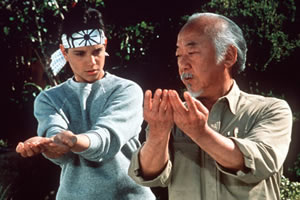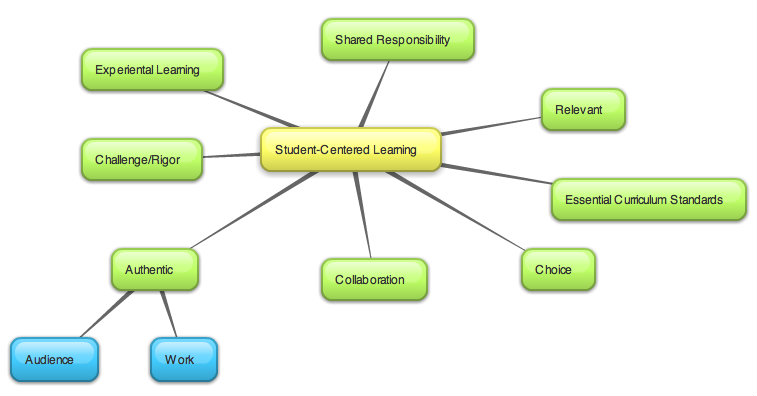Lesson 2: Preparing to Teach Online
Attention

This lesson reviews the time, communication skills, and technological skills necessary to prepare and deliver your online class.
Do you have what it takes to be a great online instructor? Are you ready? Let's find out!
Learning Outcomes
Upon completion of this lesson's material, Faculty will be able to:
- Develop a self-assessment as to personal readiness for the expectations related to teaching online.
Teaching
There are a lot of resources out there that identify the types of skills it takes to be an successful online learner. This of course is of great concern to many developers of online coursework so there is a lot of research available on the topic.
But, what does it take to be a good online instructor? Some might suspect that teaching is teaching and the qualities that make someone a good face-to-face teacher are the same as those that make for a good online teach. While this is true in many instances, it is not totally true. Here is a list of what are widely considered to be characteristics that make for a good online instructor:
- Organizes and Prepares Course Materials
- Is Highly Motivated and Enthusiastic
- Committed to Teaching
- Has a Philosophy Supporting Student-Centered Learning
- Is Open to Suggestions Following pre- and post-Learning Evaluations
- Demonstrates Creativity
- Takes Risks
- Manages Time Well
- Is Interested in Online Delivery of Courses with no Real Rewards
- Responds to Learners Needs within the Expectations Stated by Instructor
- Is Disciplined to Require and Reinforce Expectations with Students
One might say that all of these characteristics make for good teaching regardless of the modality of teaching and that is correct. But let's take a look at how this applies to ONLINE teaching and the kinds of specific skills you will need to be successful.
Organizes and Prepares Course Materials

Keep in mind that in the online class a lot of the material for a course has to be prepared and posted ahead of time. You also have to familiarize yourself with the tools to develop effective online course materials. Here are some examples:
- It is best practice to have all your materials for the entire class posted on the first day of the class.
- Handouts likely need to be converted to PDF so that they can be accessed by your whole class. You also need to include an explanation as to what the handout is for.
- Powerpoint slides posted in the course are simply outlines with graphics...this is very poor practice. When your face-to-face students see your slide shows they get a lot more than just the slides...how are you going to give your online classes the same effect? Record video/audio?
At the same time you probably have to be careful to not overwhelm your students with multimedia. Just because you think a new technology is cool and would be fun to use does not mean that it will be an effective educational tool!
Is Highly Motivated and Enthusiastic

Your students are going to encounter not only cognitive and motivational barriers for the material you are teaching (thus you need to be a cheerleader for your material) but they will also experience cognitive and motivational barriers for the Bb interface! You need to "get into" the challenge of learning the interface and help your students see these challenges as opportunities for growth.
If you get into the "Woe is me I have to use this Bb and it is not easy!" mentality you probably should not teach online!
Committed to Teaching

I was in a meeting once and the conversation was about how online classes might be easier to teach because you only have to construct your materials once and you can use communication technology to deliver content efficiently. A colleague, Scott Hood, stated that teaching an online class of 20 students is like teaching "20 independent studies"! Scott was absolutely right, in a way.
While it is true that technology in Bb allows for some efficient delivery of content and communication, you are also the first contact for all sorts of questions and concerns from your students. In a regular classroom your students might actually wait until the next class to pose a question they have...in the online class they pose it right away. You end up working very closely (i.e. lots of emails) with some students as they struggle with material and find their way through the course.
Teachers have to be deeply committed to getting into their students' heads and working with them to help them learn the material.
Has a Philosophy Supporting Student-Centered Learning

While most of us may say that we have this philosophy, in truth, we are very reluctant to give over control of the classroom to students. We want to manage the conversations in class, we want to pick the sequence of materials, we want to be the "guide on the side" as students work through our content.
Each of these roles can happen in the online classroom but a new factor is introduced into the online class that is rarely in the face-to-face class...nonlinear learning.
When you and I search the web it is rarely a linear process...it is, after all, a web. We might chase an idea down one direction and then backtrack to find a new approach and so on. For many online students this is an effective way in which they approach the material in the classroom.
I am a strong advocate of making all of the my course materials available on day one of the class, along with many of the assignments. If a student wants to work ahead or wants to jump around the material this is fine. This puts the student in charge of their learning. This has many benefits for both the student and the teacher. While there are exceptions (related mostly to MY time management...see below) I allow students to experience the class on their own time line.
In addition, to engage the online learner it is good to be open to allowing the students to question and bring in external ideas and material. This may detract from the focus of a particular lesson, but it allows students to be more engaged in the thinking process that underlies learning.
Is Open to Suggestions Following pre- and post-Learning Evaluations

Similar to the previous characteristic, being open to feedback from your learners is a key aspect of successful online teaching. There is no one way to teach specific topics online so your best measure is the experience of your learners. Be open to critique from your students as to the nature of your online course materials and assignments.
Keep in mind that when students fail an assessment it might be for any number of reasons...including the possibility that your materials and assessments did not do a good job with that particular topic. We are continually evaluating and re-evaluating our methods in online teaching and the best source of this information is our students.
Demonstrates Creativity

Because of the nature of what we are trying to do, and because, as I have said, there is no one way to teach topics online...we are driven to be creative in how we approach our teaching.
What might have worked in the face-to-face classroom may not work in the online world. Here is an example:
Let's say that you have a stirring lecture on a topic and you followed that lecture with a discussion in class about the ethics involved. In the face-to-face classroom this may have worked very well. You may have experienced great participation an can very well manage the challenging conversation in the classroom.
A simple translation of this method to the online class would be to post an audiovisual version of the lecture and then open a discussion board for comments on the ethics. However, you might find that this does not work as well when you try it. You find the posts are bland and the dynamic conversation that usually happens in the face-to-face class simply does not happen.
You may consider altering the methods a bit. Maybe you divide the class into a number of small groups and designate leaders in each group. You send key instructions to each leader and task them with leading the online discussion to answer a set number of ethical questions. Each leader can then participate in a class-wide discussion about the different answers they got from their respective groups while the rest of the class simply reads along.
You may also have very cool activities that you do in class that will be challenging to do online...remember to focus on the Learning Outcomes when you come across this type of challenge...are there more effective ways to achieve the same Learning Outcomes in the online classroom that used to get met by this particular activity?
Takes Risks

This is one of my favorite aspects of teaching online. We take chances, we try new things...this both challenges us as instructors and challenges our students. We might try new tools and new methods of teaching. Maybe we have never recorded our own voice and posted an audio lecture or even a video lecture.
One bit of advice about risk taking though...make sure that if YOU are taking a risk on a new tool or method, that you have a plan B and that the stakes are not really too high. By taking risks we are accepting the possibility of failure. We should be willing to make changes midstream and work with our students.
Recently I started a class using a new tool and made that tool (Journals) an integral part of the course and class grade. About 4 weeks into the class it was clear that the tool was not working as intended (mostly because I did not know how to use it). I began a discussion with the class and we decided on an alternative to the Journal that met the same Learning Outcomes. I then provided a bit of "extra credit" for those who did participate in the Journals and the class moved on. I believe this process also allowed students to feel like they had a voice in what was not working and I was responsive to it.
Manages Time Well

The key term is "manage". Each of us has the same number of hours in a day, it is how effectively we use them that counts. Managing our time means that we need to carve out an appropriate amount of time each day to spend in our online classrooms. We also need to be very clear in communicating this with our students. The classroom is essentially open 24-hours, 7-days a week, but we are not there all that time.
We do, however, have to be there quite a lot...in fact, best practice dictates that we should spend more time in an online classroom than we do in a face-to-face classroom.
You see, as best we can, we want to create a sense of "immediacy" with our students. We want them, as best as we can, to sense that we are there in the classroom by responding to them in a timely fashion. When a student posts a question or comment in a discussion board they are asking the question in real time…how long do you think they should have to wait for an answer?
We know that we can provide immediate responses most of the time, and students learn to not expect this as well. If we log in every day and respond to questions we do well to create this sense of immediacy.
In my own practice I have a daily routine. Each day I set aside time to complete a small set of tasks in each one of my online classes (in fact, I do it in every class because every class has an online component). Each day, in each class (at least once each day, but often more) I do the following:
- Check the course messages (I choose to use the messages tool so that I can organize this task daily)
- Check the course discussions (I have general communication and graded discussions in every class)
- Check any graded discussions
- Grade any project proposals (this is an ongoing process so I check them every day)
- Track what needs to be graded and plan accordingly
So, each day, for each class I teach, I go through these steps. I also tend to check messages every time I go into a class. If, for instance I've planned that I'm going to grade a particular quiz, I will check messages in that class prior to beginning my grading.
This process has allowed me to manage a very large number of online courses, students, and assignments successfully. For instance, in the Fall of 2012 I managed a course load of 6 classes. Over the course of the semester I did the following:
- Read 573 class emails (about 6 per day for every day, 7-days a week, in a 16 week semester)
- Sent 542 class emails (about 5 per day)
- Read 5776 discussion posts among 106 separate discussion board topics (about 52 per day)
- Manually graded 1406 quizzes (about 13 per day)
- Graded 229 written assignments
- Graded 33 18-page Biographies
This is NOT a major task if you stick to a rigid daily time management schedule
Is Interested in Online Delivery of Courses with no Real Rewards
Teachers come to online teaching for a number of reasons. Regardless of those reasons, an effective teacher needs to be INTO online teaching and needs to want to learn how to do it. If you are being forced to teach online and you are not committed to it, your students will know and the quality of your course will suffer.
Online teaching is NOT for everyone. It is not simply a set of skills and tasks, and it is in no way an "easier" way to teach for many people. Yes, there are perks...going to class is simply turning on the computer and as long as you are not doing any video conferencing no one knows that you have Snoopy designs on your PJs...BUT, you need to develop a passion for the methods and a willingness to "change your ways" and adapt to teaching online.
Responds to Learners Needs within the Expectations Stated by Instructor
This has much to do with time management as well. At the beginning of your course you are going to outline communication expectations for your students. How long they should expect to get an email, get feedback on a quiz, assignment, etc. You need to hold yourself responsible and accountable to this level of communication.
You also need to be alert to the struggles that some of your students may have. These struggles may be same as the struggles they face in face-to-face classes (poor time management, poor reading, procrastination, poor study skills) but they are compounded by the technology.
Is Disciplined to Require and Reinforce Expectations with Students

This can be a difficult one for many people. Due dates and expectations in the course need to be adhered to. It is critical to do this in any class because it is fair, but it is especially critical in an online classroom because of the challenges of time...both for your students and for you.
My personal approach is to ensure that each of my classes has a lot of small assignments rather than a few large ones (although I have those as well). I set very rigid due dates and "no excuse" policies that challenge my students to "ramp up" their online learning skills rather quickly. If they "fail" at any one thing it does not set them back too much, but it does teach the lesson that things need to get done on time and submitted correctly.
Learning how to learn online is PART of what you are teaching in an online class! Do not downplay the important role that this plays in teaching our students how to interact with technology to get work done...believe me, it will become a part of their work world and we will have done well to prepare them for it.
Assessment
Lesson 2 Discussion
Use this discussion to ask questions about this lesson and to discuss the content.
Lesson 2 Quiz
Of all the skills mentioned above select two which you think you may find particular challenging as you begin to teach online.
- Describe the characteristics of both skills that make it challenging for you.
- Describe a solution that you may institute in your online class to address this challenge